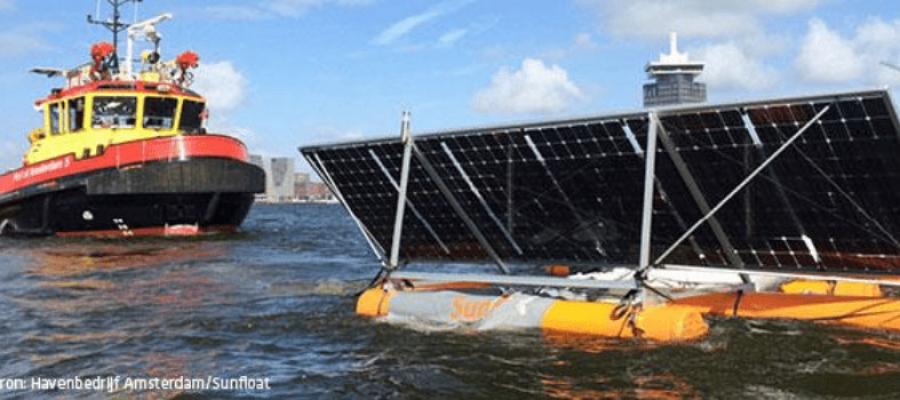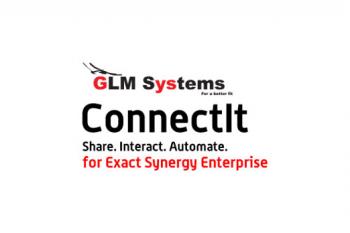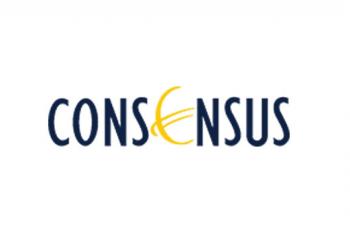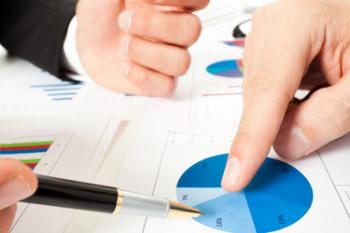News
How the Port of Amsterdam saves money thanks to corporate social responsibility

The Port of Amsterdam aims to be a top European sustainable logistics link whilst also adding value to the Amsterdam metropolitan region. CFO Michiel de Brauw was appointed to achieve this, with the support of Exact.
The Amsterdam port region is an important logistics hub, with an annual freight transshipment exceeding 100 million tonnes”, says the Port of Amsterdam CFO Michiel de Brauw. “The added value to the regional economy amounts to nearly 7 billion euros. The port is one of the largest energy ports in Europe, with more than 75 percent of the transshipment in fossil fuels. The advent of sustainable energy has caused a huge transformation. With the ambition to stop the storage and transshipment of coal by 2030, we’re fully committed to the development of new activities and innovations focused on a faster switch to clean energy.”
Sustainability ambitions
“We want to be one of the leading sustainable ports in Europe. We’re now the largest petrol port in the world and the second largest coal bunkering port in Europe. We want to remain one of the largest energy ports, but with a diminishing footprint. That’s why we’re primarily focussed on the energy transition. Not by rejecting the fossil fuels industry, but by strengthening our share in renewable energy and other non-fossil energy markets.
In the course of my career at DHL Supply Chain, and particularly during the last three years when I was in Germany, I’ve noticed how wide-ranging corporate social responsibility is. And how important it is to really put sustainability on the map, especially in deals with major clients. When a company outsources its logistical processes to a company with a green image, it improves the image of the client. Germany is clearly ahead of the Netherlands here. They’re incredibly driven to achieve a clean energy supply. On clear days with sun and wind, they don’t have to engage the coal-fired plants. We still have a long way to go in the Netherlands.”
Circular economy
“In addition to the energy transition that we envisage, we’re focussing on the circular economy in our region. The Amsterdam metropolitan region is one of the most densely populated regions in the world and keeps on growing. This creates challenges in terms of environmental pressures and general nuisance issues. The challenge for us is to limit the physical impact of the port while handling the limited space we have due to the city’s growth in a smart way.
Ambitious sustainability objectives can only be achieved by working together. For example, the port handles the city’s waste processing facility, so there’s a vast amount of recycling to do. As a consequence, we set up a chain of companies in the port that reuse the waste materials. This circular economy in the Amsterdam port will become increasingly important. In addition, we’re attracting start-ups and scale-ups which provide diversification and innovation, focused on the acceleration of this energy transition among other things.
Why is this all happening in the port? Because we have the physical and environmental space. Our focus is shifting from the transit of cargo between, for example, South America, Africa and the hinterland more towards adding value to the region. Furthermore, we’ve created approximately 70,000 jobs in and around the port. Added value and jobs are becoming more important than simply processing tonnage.”
The CFO at the controls
“The sustainability ambitions and initiatives of the Port of Amsterdam are well-suited to the duties of a CFO. It’s about value creation. We’re looking beyond growth ambition or profit; societal value is also important. By 2021, we want to achieve 100 percent sustainability in our purchasing. The strict requirements that apply nowadays for CSR reporting also makes the CFO a logical candidate for overseeing these ambitions. The GRI (Global Reporting Initiative) guidelines for sustainable reporting are an internationally recognised standard that our reports must comply with.
In recent years, we’ve developed our CSR policy into a plan with clear objectives. We can measure everything. Our CSR manager Linda van Waveren doesn’t have a financial background, but that’s not a problem - we support her with KPIs, analyses and results. That’s what makes it so effective to tackle these issues in the company’s financial organisation.
As the central figure, Linda ensures that everyone in the company is involved and engaged with sustainability in their own area. Take our nautical sector as an example, which regulates shipping traffic in the North Sea Canal. They’re striving towards the goal of clean shipping by offering discounts to clean ships. We’re also involved in generating clean energy as joint owner of a wind farm. In addition, we’ve installed 100,000 m2 of solar panels in the port. This allows us to increasingly develop into the role of ‘the city’s battery’. We’re shifting from the traditional role of a port into a broader company. But we’re not the only ones making this transition- the ports of Antwerp and Rotterdam are also undergoing similar changes.”
Financial and societal return
“I used to have primarily ‘blue’ people in my finance team – the meticulous, factual types. Now I also look for the ‘green’ types – people who are able to see the bigger picture. That balance between financial and societal objectives is exactly what adds value to our sustainability ambitions. It’s mainly the non-financial information I find most important; what’s more, my monthly reports don’t just consist of hard figures, but reports about air quality and quality of life.
People in my team can’t just take decisions based on financial return. Take, for instance, the cranes that we work with in the port. A concrete company used a diesel crane that was causing a nuisance for residents, so we purchased an electrical crane as a joint investor. This crane made no noise and the replacement offered the environmental benefit of a reduction in the emission of CO2, nitrogen and particulate matter emissions. That’s a good step for the residents’ quality of life. Financially, it didn’t really offer any benefits. But it was important. This doesn’t make decisions any simpler. Sometimes something provides a low financial return but offers a high social return. So how do you reach a decision in cases like these? By intuition.
This is how you expand your license to operate. Ultimately you can grow as a port, but you have to keep an eye on the bigger picture and not just each individual investment. Corporate social responsibility also leads to cost savings: but only if you look at the situation as a whole. We have highly specific plans for the future. Not just for the coming five years, but for the next 15 years and onwards. We’ve taken a path and by measuring KPIs we feel that this is the right direction. The port has been around for more than 700 years. We don’t know what it will look like in 50 years, but now we can create a rough outline.”
Port of Amsterdam uses Exact software among other things for their financial processes


